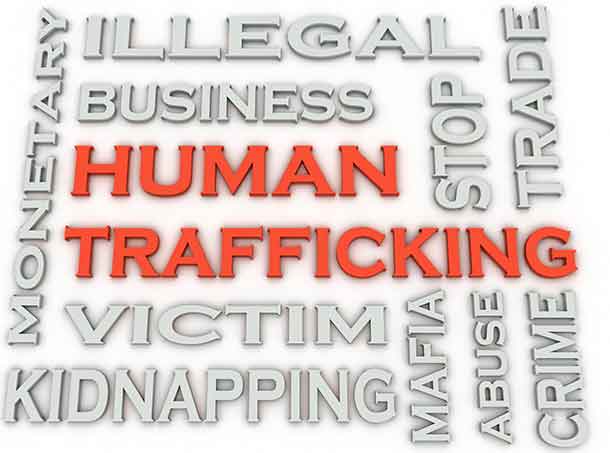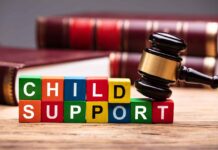“Nobody wanted me. This set me up to be vulnerable and needy”
By Ellen Wulfhorst
NEW YORK – (Thomson Reuters Foundation) – Children removed from unfit families and put in foster care are terrifyingly vulnerable to being trafficked, a fact that Amy Andrews knows all too well.
She spun in and out of her abusive family home into the child welfare system, starting when she was 10 years old. By 14, she was selling sex on Hollywood’s Sunset Boulevard, working for traffickers who exploited her naivete and need for attention.
“I’m loved, I’m wanted, I’m cared for, I’m given everything I want and no one blames me,” Andrews said of being trafficked. “And I’m being sexually abused, but I can overlook that.
“Nobody wanted me. This set me up to be vulnerable and needy,” she told the Thomson Reuters Foundation.
Hundreds of thousands of U.S. children live in foster care, prey to predator sex traffickers who may find their young victims at bus stops, shopping malls or street corners as well as on social media and online chat rooms.
Often removed from abusive or negligent families, girls and boys in foster care are at high risk, said Dorchen Leidholdt, legal center director at Sanctuary for Families, which advocates for domestic violence and sex trafficking survivors.
“Traffickers go for our most vulnerable, and kids who are or were in foster care are the most vulnerable children in our society,” Leidholdt told the Foundation.
“These predators know all the signs and look for them.”
Traffickers can tell that “you’re the kid who doesn’t have any family,” said Andrews, who now at age 43 works with trafficking survivors.
Having no one they trust makes children in foster care vulnerable, experts say.
“Kids in foster care, they don’t really have parents or certain individuals or a caring safe adult that they can go to or that they can confide in,” said Kristina Fitz, a trafficking survivor who works as a case manager with the Los Angeles area Children’s Law Center.
“They’re the quickest ones to fall into the hands of an exploiter.”
The added threat of online culture dispels the protective notion that children should not talk to strangers, said Lisa Goldblatt Grace, who runs My Life My Choice, an anti-trafficking and exploitation group in Boston.
“They talk about being friended by a friend of a friend of a friend,” she said. “Many still get recruited by face-to-face meetings, but it’s a real mix of the two.”
“YOU’RE DAMAGED”
My Life My Choice helps children in foster care and group homes who often have pasts filled with sexual and physical abuse, paying attention to threats posed on social media.
“Exploiters actively look for kids with this kind of trauma history,” Grace said.
“Kids learn that their body is not their own and that if you tell, nobody believes you, and that you’re damaged. Those are the exact same messages that a pimp wants to teach a girl.”
More than 437,000 children in the United States were in foster care at the end of 2016, according to the Los Angeles-based National Foster Youth Institute.
Last year, one in seven children reported missing was likely a victim of sex trafficking and of those, 88 percent were in the care of child welfare when they went missing, according to the National Center for Missing and Exploited Children (NCMEC).
“They are more vulnerable to the manipulation and false promises that traffickers make,” said Staca Shehan, who heads the case analysis division at the Virginia-based organization.
“I don’t think kids in the child welfare system have well-developed skills to thwart these efforts.”
The center runs NetSmartz Workshops to educate children about potential online risks, using cartoons and games to teach younger children and using teens sharing firsthand stories to reach older children.
Those in foster care are at particular risk of being trafficked when they “age out” of the system at age 18 or 21, depending on where they live, experts say.
“We have cases of clients who literally were trafficked the day they were kicked out of foster care,” said Andrea Powell of FAIR Girls, an anti-trafficking group in Washington.
She said more than two-thirds of the girls involved with the group are in the foster care system.
SENSE OF BELONGING
In the San Francisco, California area as well, about two-thirds of the youth who have been trafficked for sex have had some link to foster care, according to Alia Whitney-Johnson, executive director of Freedom FWD, an anti-trafficking group.
“A lot of them, they want a sense of belonging,” said Jenny Cheung Marino, firm director at the Children’s Law Center of California which works with exploited children in Los Angeles County.
“They’re coming from broken homes, a lack of love, lack of a father figure.
“Traffickers know where to find them, at bus stops, at certain group homes, unfortunately,” she told the Foundation.
A key way to minimize the danger is placing more children with their own relatives rather than with strangers in foster homes or group homes, said U.S. Representative Karen Bass, a California Democrat and a longtime campaigner for foster care reform.
Placement with relatives can give children that missing sense of belonging or caring, Bass told the Foundation.
“Every youngster that I’ve ever talked to who was trafficked says the same thing – “They didn’t come looking for me. Nobody cared. They didn’t bother to come,'” she said. “And that’s criminal.”
(Reporting by Ellen Wulfhorst, Editing by Claire Cozens








